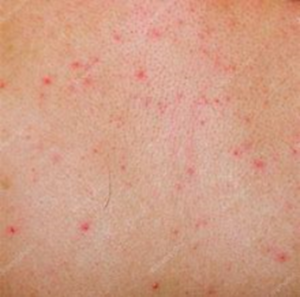If you or your childhave life-threatening allergies, oranaphylaxics, a reaction can happen when your body comes in contact with a trigger called an allergen, your immune system reacts to the allergen and releases chemicals to protect you. if your immune system releases a large amount of these chemicals, you can experience life-threatening symptoms (see next page).
This dangerous reaction can happen within minutes to hours of being exposed to a trigger. Because symptoms can get worse quickly, it’s important to be treated immediately with a medicine called epinephrine and taken to the emergency room.
The best way to keep yourself, or your child, safe is to learn what causes your life-threatening allergic reactions, and take steps to avoid those things.

“I am severely allergic to shellfish so I wasn’t surprised when the doctor told me my son was too.my doctor said having a family history can increase your risk. Now we both know what to do if either of us has a reaction,”
If you or your child has a life-threatening allergic reaction, symptoms may include:-
- Skin reactions, including hives with itching, flushed, warm or pale skin.
- Tightness in your chest or throat-feeling like your throat or airways are closing
- Wheezing of your face, tongue, lips or eyes
- Nausea, abdominal pain, vomiting or diarrhea
- Weak or rapid pulse
- Feeling weak or dizzy, or fainting
- Feeling of anxiety or doom
If you notice any of these symptoms, use an epinephrine auto-injector, and call 911 or get emergency medical attention.
Exposure to allergens like pollen, pet dander or mold usually lead to mild allergy symptoms like sneezing, coughing allergic reactions are usually caused by other triggers, including
Food -many foods can cause a reaction, but the most common ones include:
- Peanuts
- Nuts from trees (walnuts, pistachios, pecans, cashews)
- Shellfish (shrimp, lobster ,crab)
- Fish (tuna, salon, cod
- Milk
- Eggs
- Wheat
- soy
Treatment
The best way to keep yourself or your child safe is to avoid triggers. But if a reaction dose strike, it’s important that you what to do.
Epinephrine is the first medicine you need during a life-threatening allergic reaction.
It usually comes in an auto-injector that you inject in into your thigh. It’s important that you use the auto-injector quickly and correctly. so that you’re prepared in case there’s an emergency, ask your doctor to show you how to use it and read the directions that come with it. Don’t wait until an emergency strikes to learn how to use the medicine. Also, antihistamines to treat the life-threatening symptoms of anaphylaxis.
EMERGENCY STEPS
If you or your child is having a life-threatening allergic reaction, get away from whatever may be causing or triggering it (if possible), and follow these steps:
Step1 – use an epinephrine auto-injector as soon as you notice symptoms:
- inject the medicine into your outer thigh (it can be used through clothes)
- Firmly push and hold for 5 to 10 seconds (depending on which auto-injector you’re using and what the instructions say).
- Lay flat on your back and raise your legs. if you’re having trouble breathing or vomiting sit up or lie on your side.
Step 2- call 911.or get emergency medical attention. Tell the person helping you that you’ve just used an epinephrine auto-injector.
Step 3- After 5 minutes, if symptoms don’t get better or they come back, use a second epinephrine auto –injector.
Once you’re at the hospital, the staff will watch you or your child for at least 4 hours to make sure there isn’t a second round of symptoms. your doctor may also recommend an antihistamine or steroid medicine after the epinephrine injections to help improve other symptoms like a rash and itching.
AFTER AN ALLERGIC REACTION
Immediately after having A severe allergic reaction, you or your child may be scared and nervous. This is normal and expected. Once you’re home from the emergency room, you’ll make a follow-up appointment with your doctor. You and your doctor can talk though what happened and what caused the reaction, and make a Plan for how you can prevent another reaction in the future, At the visit, also make sure your prescription for epinephrine is current and that you have refills available.
You’ll want to do everything you can to help prevent future reactions, but it may be impossible to always prevents the risk. So it’s important to make sure you, your child, and everyone who is regularly I correct with both of you know what the symptoms of what the symptoms of anaphylaxis what to do if one of you has a life threatening allergic reaction.

